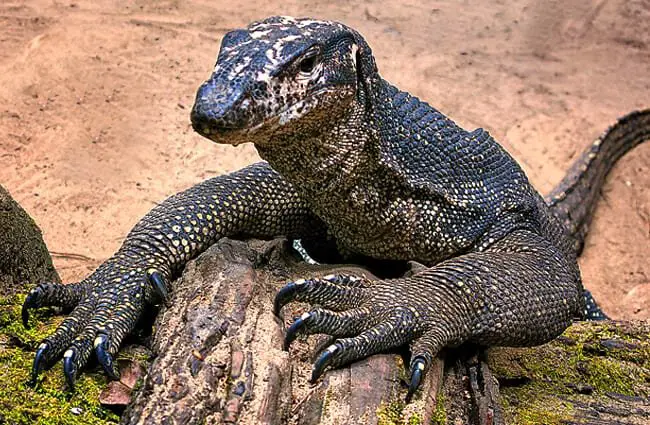
Varanus salvator: Exploring the Enigmatic World of the Water Monitor
In the intricate tapestry of the natural world, few creatures evoke a sense of mystery and wonder quite like the Varanus salvator, commonly known as the Water Monitor. With its sleek, streamlined body and piercing gaze, this formidable reptile commands attention as it prowls the waterways of its habitat. Join us on a journey of discovery as we delve into the captivating world of the Water Monitor.
Majestic Appearance: A Glimpse into the Beauty of the Water Monitor
The Water Monitor is a sight to behold, with its elongated body covered in rough, dark-colored scales that provide protection and camouflage in its aquatic environment. Its powerful tail propels it effortlessly through the water, while its sharp claws and strong limbs enable it to navigate challenging terrain both on land and in the water. With its keen eyesight and acute sense of smell, the Water Monitor is a masterful predator, capable of detecting prey from afar and swiftly capturing its quarry.
Habitat and Range: Exploring the Diverse Environments of the Water Monitor
The Water Monitor is found in a variety of habitats across Southeast Asia, including rivers, lakes, swamps, and mangrove forests. It is equally adept at traversing terrestrial and aquatic environments, making it a versatile and adaptable species. From the dense rainforests of Indonesia to the arid scrublands of Sri Lanka, the Water Monitor thrives in diverse ecosystems, playing a crucial role in maintaining ecological balance as both predator and prey.

Ecological Role: The Importance of the Water Monitor in its Ecosystem
As a top predator in its habitat, the Water Monitor plays a vital role in regulating populations of prey species and maintaining the health of aquatic ecosystems. Its diet consists of a wide variety of prey, including fish, amphibians, birds, and small mammals, making it an important link in the food chain. Additionally, the Water Monitor serves as a scavenger, helping to clean up carrion and organic matter from its environment.
Cultural Significance: The Water Monitor in Mythology and Folklore
Throughout history, the Water Monitor has held a special place in the mythology and folklore of the regions where it is found. In some cultures, it is revered as a symbol of strength, wisdom, and resilience, while in others, it is feared as a harbinger of bad luck or misfortune. Its presence in local legends and stories reflects the deep connection between humans and the natural world, highlighting the significance of the Water Monitor in shaping cultural identities and beliefs.
Conservation Challenges: Protecting the Future of the Water Monitor
Despite its adaptability and resilience, the Water Monitor faces numerous threats to its survival, including habitat loss, pollution, poaching, and human-wildlife conflict. As human populations continue to expand and encroach upon its habitat, the Water Monitor’s future hangs in the balance. Conservation efforts aimed at preserving its natural habitat, combating illegal trade, and promoting coexistence with local communities are essential to ensuring the long-term survival of this enigmatic reptile.
Conclusion: Embracing the Majesty of the Water Monitor
In conclusion, the Water Monitor stands as a symbol of resilience, adaptability, and natural beauty in the diverse ecosystems of Southeast Asia. From its majestic appearance to its important ecological role, this enigmatic reptile captivates the imagination and inspires awe in all who encounter it. As stewards of the natural world, it is our responsibility to protect and preserve the habitats of the Water Monitor, ensuring that future generations can continue to marvel at its splendor and significance.






